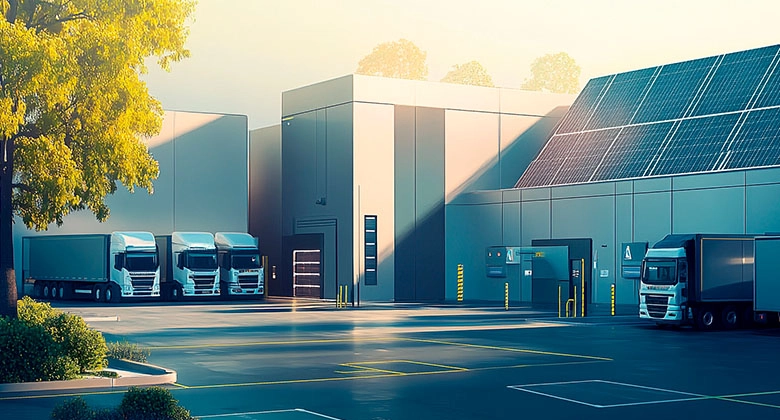

When it comes to the stability and reliability of industrial sites, warehouses, or logistics centers, one of the key priorities is temperature control. Even the slightest deviation from the norm can result in spoiled goods, equipment failure, or even safety hazards. And this is where the alliance between technology and nature steps in—solar energy in service of precision.
Why temperature matters
Temperature is not just a number on a display. It’s a critical parameter for storing pharmaceuticals, food, chemicals. In logistics and warehousing, climate control influences everything—from compliance with sanitary standards to packaging integrity and the smooth operation of automated systems.
However, monitoring systems—especially in remote areas—can’t always rely on grid power. This is where autonomous solutions come into play, such as a low-cost solar power plant in Kyiv for logistics centers and warehouses, ensuring uninterrupted energy supply to sensors, cameras, and control units.
How it works
It all starts with the solar panel. It captures sunlight and converts it into electricity. The power then flows to a battery bank, which supports the system even at night or during cloudy weather.
Such solutions are especially valuable for facilities located off-grid—agricultural storage units, temporary logistics points, or backup warehouses.
Here’s what a solar-powered monitoring system offers:
- Continuous data collection — 24/7 in any weather
- Minimal maintenance costs
- Easy scalability for expanding warehouse space
Modern technology also allows the integration of weather sensors, humidity controls, and even airflow tracking. And it’s all powered by clean, sustainable energy.
A practical example: a real-world case
Recently, a warehouse terminal near Poltava implemented an autonomous solar system to monitor temperatures in frozen goods storage zones. The results: 100% product preservation, reduced diesel generator usage, and automatic alerts in case of overheating. A simple yet effective solution.
This becomes especially cost-efficient when integrated during the planning stages of new facilities. By designing solar into the build from the start, owners avoid grid infrastructure costs and reduce dependence on public utilities.
An investment that delivers
Many assume such technology is reserved for large corporations. In reality, it’s more accessible than expected. Flexible, scalable systems make it possible to tailor solar power to specific needs.
For example, a 1 MW turnkey solar power plant and pricing in Vinnytsia can serve not just monitoring systems, but related services too—security lighting, EV charging stations, ventilation.
It’s not just about panels and batteries. It’s an investment in resilience, predictability, and energy independence.
More than just heat—reliability
Autonomous systems are especially valuable in regions with unreliable grid power. Imagine: the power goes out at your facility, but the storage room temperature remains unchanged because the system switched to backup mode. The peace of mind that solar provides is priceless.
These systems can also be adapted for other purposes:
- automated greenhouse climate control
- temperature monitoring in refrigerated transport
- mobile lab storage condition tracking
What to consider when choosing
When planning to implement a solar solution, it’s important to consider:
- Roof or site area and layout for solar panel installation
- Required power capacity based on connected devices
- Backup autonomy during overcast days
- Remote monitoring capabilities
If you're wondering how to choose a solar power plant of 100, 300 or 500 kW, the best step is to consult with experts. They’ll assess your needs and recommend a system that runs reliably for years to come.

